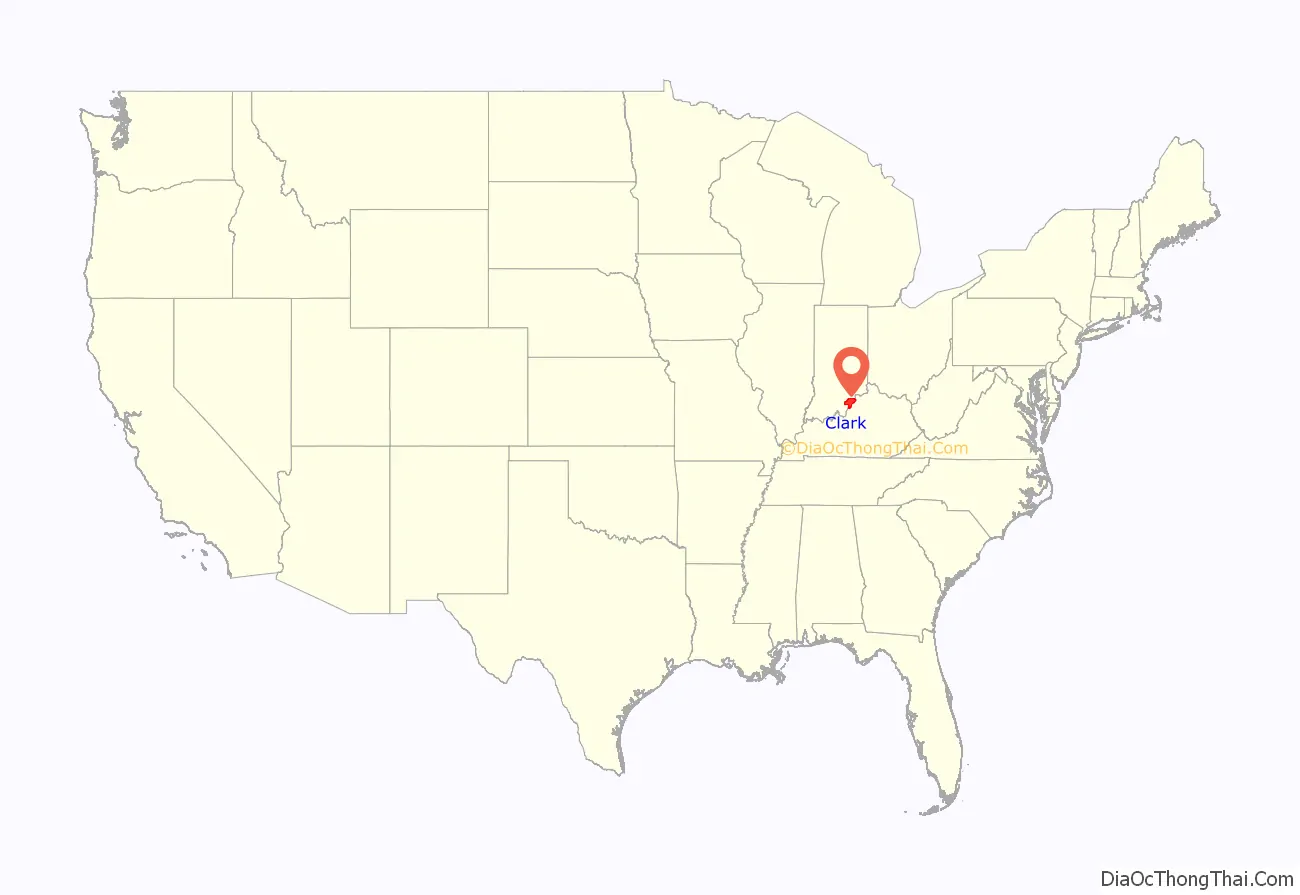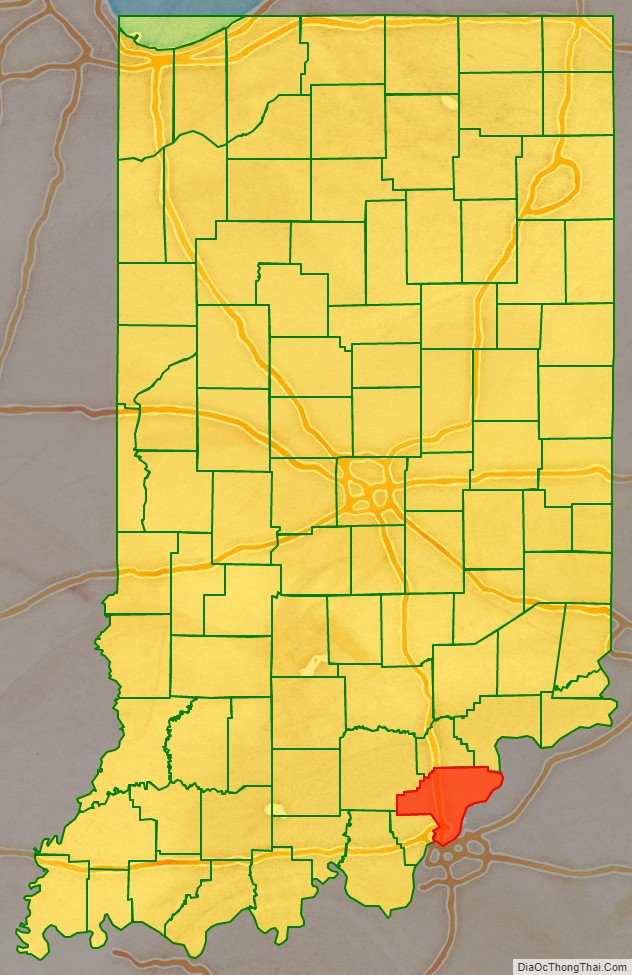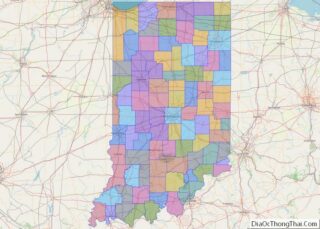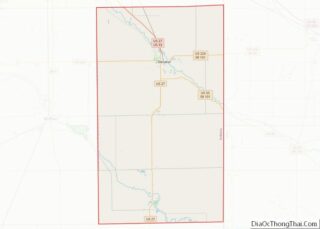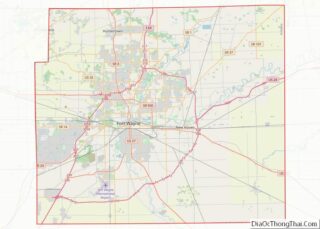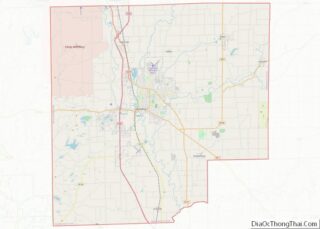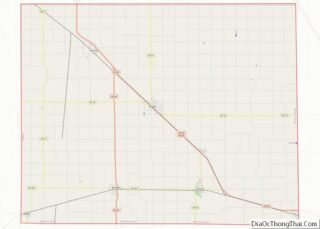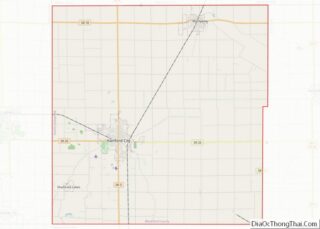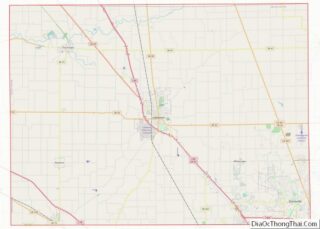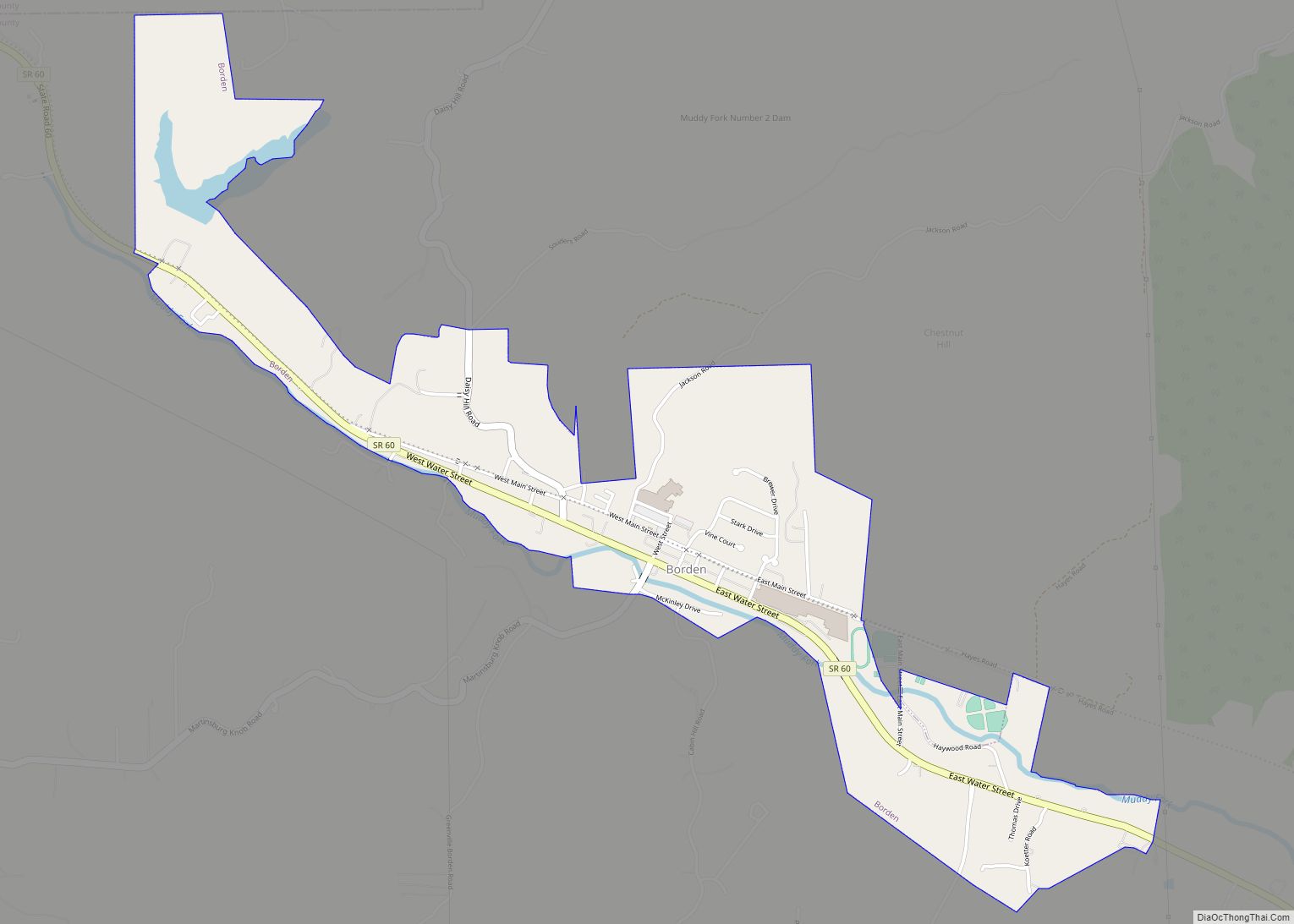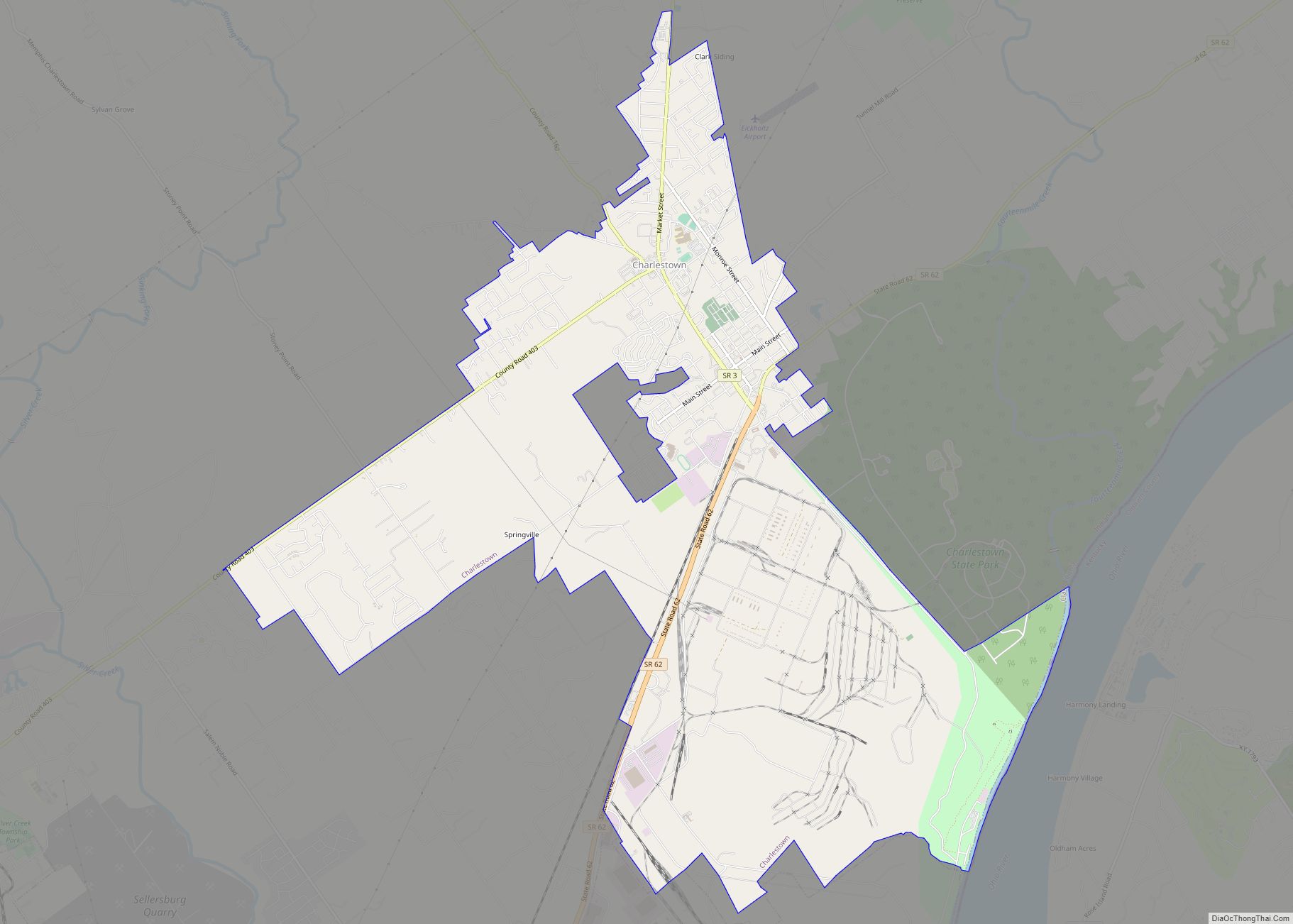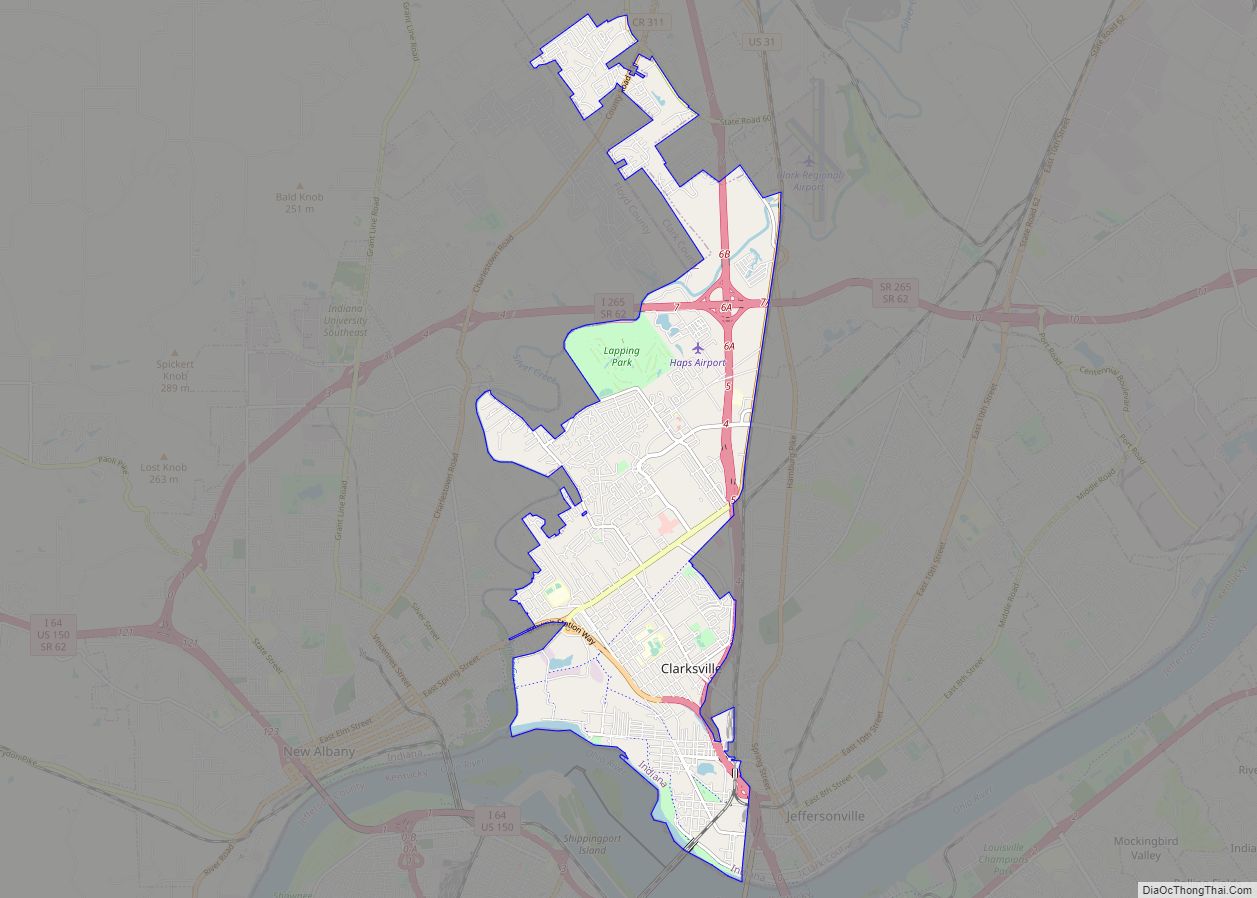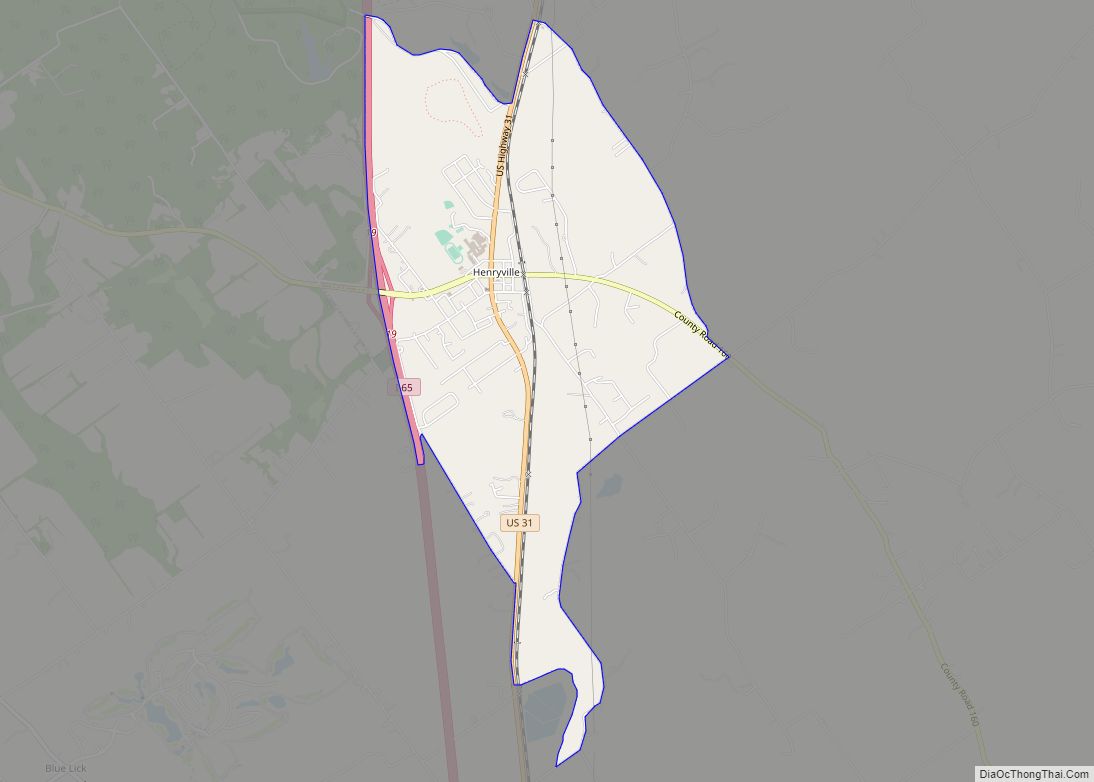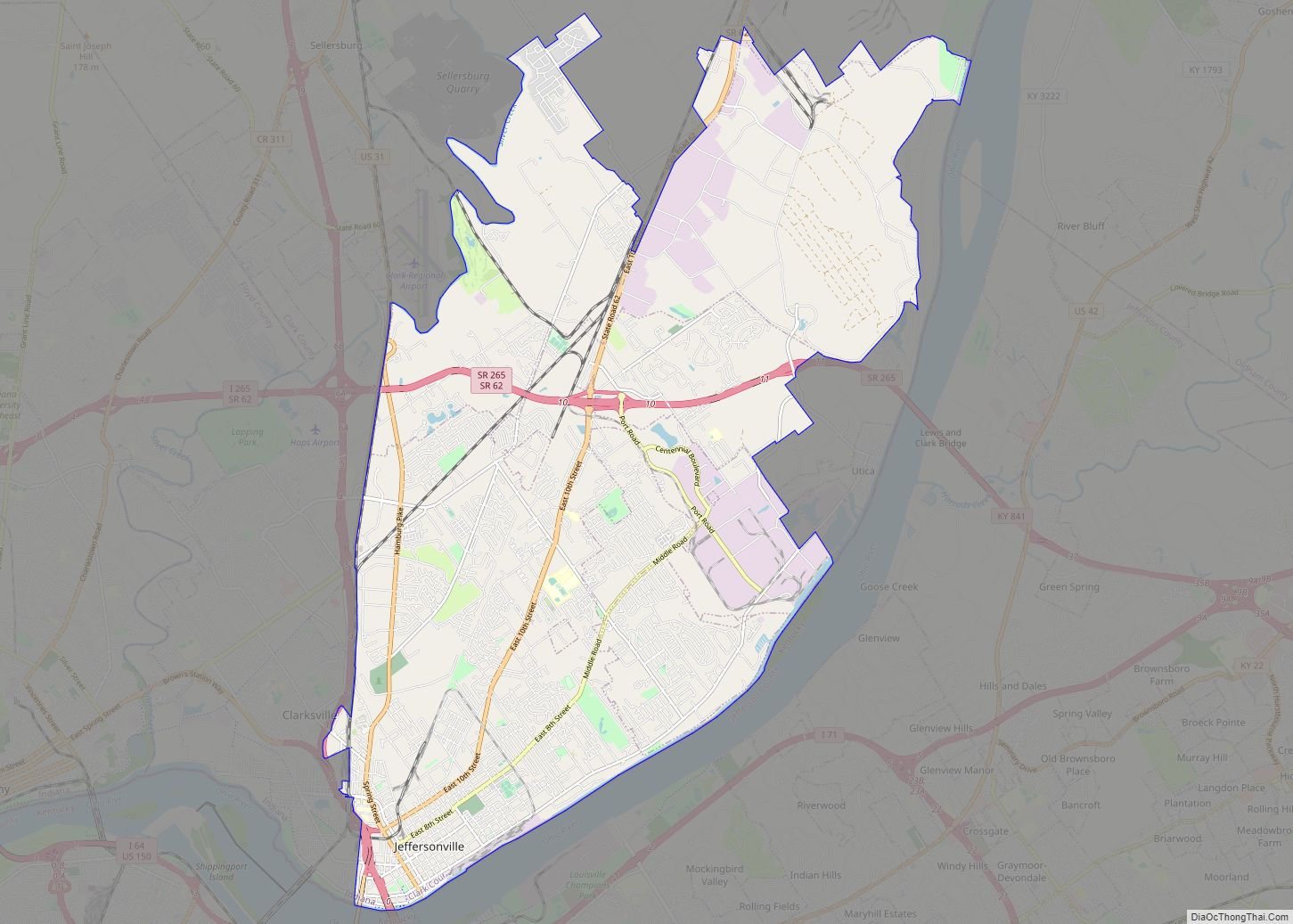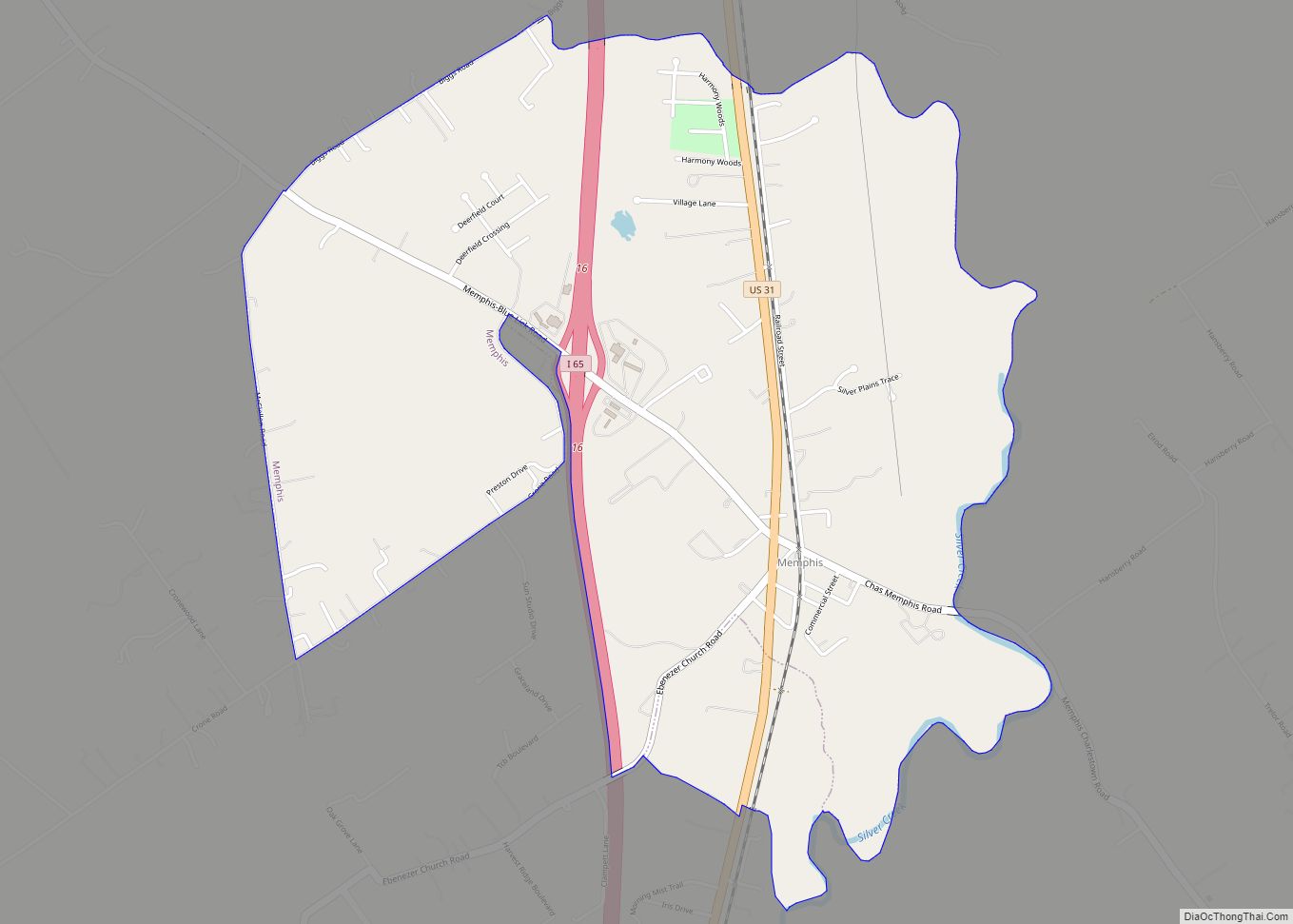Clark County is a county in the U.S. state of Indiana, located directly across the Ohio River from Louisville, Kentucky. At the 2020 census, the population was 121,093. The county seat is Jeffersonville. Clark County is part of the Louisville/Jefferson County, KY–IN Metropolitan Statistical Area.
| Name: | Clark County |
|---|---|
| FIPS code: | 18-019 |
| State: | Indiana |
| Founded: | 3 February 1801 |
| Named for: | General George Rogers Clark |
| Seat: | Jeffersonville |
| Largest city: | Jeffersonville |
| Total Area: | 376.45 sq mi (975.0 km²) |
| Land Area: | 372.86 sq mi (965.7 km²) |
| Total Population: | 121,093 |
| Population Density: | 320/sq mi (120/km²) |
Clark County location map. Where is Clark County?
History
Clark County lies on the north bank of the Ohio River. A significant gateway to the state of Indiana, Clark County’s settlement began in 1783. The state of Virginia rewarded General George Rogers Clark and his regiment for their victorious capture of Forts Kaskaskia, Cahokia, and Vincennes from the British, by granting them 150,000 acres (610 km) of land. A small portion of this land, 1,000 acres (4.0 km), became known as Clarksville, the first authorized American settlement in the Northwest Territory, founded the next year in 1784.
Clark County was formed on 3 February 1801, with territory annexed from Knox, the first county formed in the Territory in 1790. This original area in Clark County was subsequently altered and reduced with the formation of other counties: Harrison (1808), Franklin, Jefferson, and Wayne (1811), Switzerland and Washington (1814), Jackson and Ripley (1816), Jennings (1817), Crawford and Randolph (1818), Fayette and Floyd (1819), Scott (1820), Union (1821), Decatur and Rush (1822).
The first county seat was established in Springville, on April 7, 1801. Jeffersonville was platted in 1802, and on 9 June the Territorial Governor (William Henry Harrison) ordered that it be regarded as the county seat. However, on 14 December 1810, the seat designation was given to Charlestown, which retained the designation until 1873, when on 23 September the Jefforsonville mayor (Luther Warder) successfully campaigned for the county seat’s return.
Clark County was a hotbed for antislavery sentiment during the territorial period. In 1807, citizens petitioned Congress to uphold the legal prohibition of slavery established in the Northwest Ordinance in response to efforts by Harrison and his supporters to have the prohibition repealed. Many settlers were Quakers who had migrated from North Carolina to escape the oppressive conditions of the slave states and did not want to see slavery be established in Indiana.
From its beginning Clark County’s history, culture and growth have been linked to the development of the river. Early nineteenth-century steamboats transported goods to the upper Ohio, providing opportunities for commercial and industrial growth in the county. In 1832, James Howard founded the Howard shipyards making Clark County a leader in shipbuilding.
The railroad brought further economic growth. The Monon line spanned from New Albany to Chicago, and the Jeffersonville, Madison, and Indianapolis Railroad provided Clark County and southern Indiana with access to the northern trading centers of Indianapolis and Chicago.
Industries locating to Clark County during the nineteenth century included the Louisville Cement Company in Speed, Indiana and the Ford Plate Glass Company established in Jeffersonville in 1876.
During the 1920s, Clark County attracted the Colgate-Palmolive Company to the Clarksville Riverfront. Colgate purchased the former Indiana Reformatory building in 1923. The company rehabilitated and adapted the building for its dedication in 1924. It stayed in business until early 2008.
During World War II the county prospered. The federal government began the Indiana Arsenal near Charlestown in 1940. Producing smokeless powder for the war effort, the arsenal employed up to 20,000. Howard shipyards was commissioned by the Navy to produce landing craft. Later Howard shipyards reorganized as Jeffersonville Boat and Machine Company (Jeffboat) — a current major employer (1991).
When the war ended, the county experienced significant residential and commercial growth, aided by the 1956 Interstate Act. The improved access provided by Interstate 65 encouraged additional subdivisions and shopping centers.
Clark County history has been closely associated with the development of the Ohio River. From its beginnings, Clark County relied on the river for economic opportunities. Clark County has diversified its economic base, lessened its dependency on the river, and continues to develop in new directions. However, the county still looks to the river as one link to its significant pioneer heritage.
Clark County Road Map
Geography
Clark County lies on the east edge of Indiana; its eastern border abuts the northern border of the state of Kentucky (across the Ohio River). The terrain is low rolling hills, with the area either devoted to agriculture or urban development. The west part of the county is carved with drainages. The highest point on the terrain is a ridge WNW of Henryville near the border with Scott County, at 1,030′ (314m) ASL.
According to the 2010 census, the county has a total area of 376.45 square miles (975.0 km), of which 372.86 square miles (965.7 km) (or 99.05%) is land and 3.60 square miles (9.3 km) (or 0.96%) is water.
Adjacent counties
- Scott County – north
- Jefferson County – northeast
- Trimble County, Kentucky – northeast
- Oldham County, Kentucky – east
- Jefferson County, Kentucky – south
- Floyd County – southwest
- Washington County – west
Cities
Towns
Census-designated places
Unincorporated places
Source:
- Arctic Springs
- Belknap
- Bennettsville
- Bethlehem
- Black Diamond
- Blue Lick
- Broom Hill
- Carwood
- Cementville
- Clarke
- Dallas
- Dyeton
- Floyd
- Germany
- Hamburg
- Haussdale
- Henze
- Hibernia
- Hughes
- Longview Beach
- Marysville
- Nabb
- New Market
- Oak Park
- Otisco
- Otto
- Owen
- Prairie Crossing
- Prather
- Pulltight
- River Ridge
- Rockford
- Rolling Hills
- Runyan
- Slatecut
- Solon
- Speed
- St Joseph
- Starlight
- Sunset Village
- Sylvan Grove
- Underwood
- Vesta
- Watson
- Wilson
Extinct towns
- Andalusia
- Claysburg
- Oregon
- Port Fulton
- Springville
Townships
- Bethlehem
- Carr
- Charlestown
- Jeffersonville
- Monroe
- Oregon
- Owen
- Silver Creek
- Union
- Utica
- Washington
- Wood
Major highways
- Interstate 65
- Interstate 265
- U.S. Route 31
- State Road 3
- State Road 60
- State Road 62
- State Road 160
- State Road 265
- State Road 362
Airport
- KJVY – Clark Regional Airport
